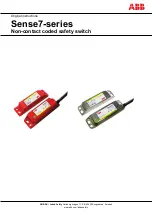
DXS-3600 Series 10GbE Layer 2/3 Switch Web UI Reference Guide
2
Web-based Switch Configuration
Management Options
Connecting using the Web User Interface
Management Options
This switch provides multiple access platforms that can be used to configure, manage and monitor networking features
available on this switch. Currently there are three management platforms available and they are described below.
The Command Line Interface (CLI) through the Serial Port or remote TELNET
This switch can be managed, out-of-band, by using the console port on the front panel of the switch. Alternatively, the
switch can also be managed, in-band, by using a TELNET connection to any of the LAN ports on this switch. The
command line interface provides complete access to all switch management features.
SNMP-based Management
The switch can be managed with an SNMP-compatible console program. The switch supports SNMP version 1.0,
version 2.0 and version 3.0. The SNMP agent decodes the incoming SNMP messages and responds to requests with
MIB objects stored in the database. The SNMP agent updates the MIB objects to generate statistics and counters.
Web-based Management Interface
After successfully installing the switch, the user can configure the switch, monitor the LED panel, and display statistics
graphically using a Web browser, such as Microsoft® Internet Explorer (version 6.0 and later), Mozilla Firefox (version
3.0 and later), Safari (version 4.0 and later), Google Chrome (version 5.0 and later), Opera (version 9.0 and later), and
Netscape (version 7.0 and later).
Connecting using the Web User Interface
All software functions of the switch can be managed, configured, and monitored via the embedded Web-based (HTML)
interface. This can be done from any remote station on the network through a standard web browser, such as Internet
Explorer (version 6.0 and later), Mozilla Firefox (version 3.0 and later), Safari (version 4.0 and later), Google Chrome
(version 5.0 and later), Opera (version 9.0 and later), or Netscape (version 7.0 and later). The browser acts as a
universal access tool and can communicate directly with the switch using the HTTP protocol.
Only some of the software features that can be configured using the Command Line Interface can also be configured
using the Web User Interface.
Logging onto the Web Manager
To access the Web User Interface the user simply runs the standard web browser and enter the Switch’s IP address
into the address bar of the browser and press the ‘
Enter
’ key. By default, the
Management
port, located just above the
Console
port, can be accessed using the IP address of
192.168.0.1/24
. To access any of the other normal LAN ports,
other than the Management port, the user needs to configure an IP address for this interface first before it can be
accessed via the Web User Interface.
Figure 2-1 Displays entering the IP address in Internet Explorer








































